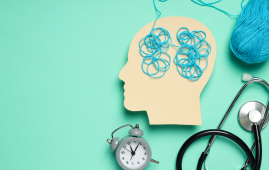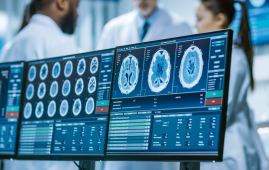

A groundbreaking study has revealed how the brain seamlessly transforms sounds into speech and conversation (speech and language pathways). By analyzing over 100 hours of brain activity during real-life discussions, researchers mapped the intricate neural pathways that enable effortless communication.
This study, conducted by the Hebrew University of Jerusalem in collaboration with Princeton University and NYU Langone, provides unprecedented insights into the mechanics of human conversation. Published in Nature Human Behaviour, the findings could revolutionize speech recognition technology and help develop new treatments for communication disorders.
How the Speech & Language Pathways Study Was Conducted
Data Collection: Researchers used electrocorticography (ECoG) to record brain activity in participants engaged in natural, open-ended conversations.
Advanced Language Processing Models: The study used Whisper, an AI-powered speech-to-text model, to break down conversations into three key levels:
- Simple sounds (phonetics)
- Speech patterns (intonation & structure)
- Word meanings (semantic understanding)
Neural Mapping: By comparing these language layers to real-time brain activity, researchers accurately identified which brain regions handle specific aspects of speech and understanding.
Key Findings: How the Brain Processes Speech & Language
A Step-by-Step Language Flow
- Before speaking: The brain moves from thinking about words → forming sounds → speaking aloud
- After hearing speech: The brain processes sounds → recognizes speech patterns → understands meaning
Real-Time Language Mapping
- The auditory cortex processes sounds
- The motor cortex coordinates speech production
- Higher-level cognitive areas decode word meanings
Improved Accuracy Over Older Models
- Unlike previous studies, this new framework captured language processing more accurately and even predicted brain activity for new conversations not included in the original data.
Implications for Communication & Technology
Potential Breakthroughs in:
- Speech Recognition AI: Enhancing voice assistants like Siri, Alexa, and Google Assistant
- Assistive Devices: Improving brain-computer interfaces for people with speech impairments
- Neuroscience Research: Providing deeper insights into how the brain processes real-world conversations
- Speech Therapy: Helping individuals with language disorders (e.g., aphasia, dyslexia)
Final Thoughts
This study offers a major leap forward in understanding how we process and produce speech. By uncovering the neural pathways behind conversation, researchers are paving the way for advanced AI communication tools and better treatments for speech disorders.
“By connecting different layers of language, we’re uncovering the mechanics behind something we all do naturally—talking and understanding each other.” – Dr. Ariel Goldstein, Lead Researcher.
More Information: A unified acoustic-to-speech-to-language embedding space captures the neural basis of natural language processing in everyday conversations, Nature Human Behaviour (2025). DOI: 10.1038/s41562-025-02105-9
more recommended stories
 T-bet and the Genetic Control of Memory B Cell Differentiation
T-bet and the Genetic Control of Memory B Cell DifferentiationIn a major advancement in immunology,.
 Ultra-Processed Foods May Harm Brain Health in Children
Ultra-Processed Foods May Harm Brain Health in ChildrenUltra-Processed Foods Linked to Cognitive and.
 Parkinson’s Disease Care Advances with Weekly Injectable
Parkinson’s Disease Care Advances with Weekly InjectableA new weekly injectable formulation of.
 Brain’s Biological Age Emerges as Key Health Risk Indicator
Brain’s Biological Age Emerges as Key Health Risk IndicatorClinical Significance of Brain Age in.
 Children’s Health in the United States is Declining!
Children’s Health in the United States is Declining!Summary: A comprehensive analysis of U.S..
 Autoimmune Disorders: ADA2 as a Therapeutic Target
Autoimmune Disorders: ADA2 as a Therapeutic TargetAdenosine deaminase 2 (ADA2) has emerged.
 Is Prediabetes Reversible through Exercise?
Is Prediabetes Reversible through Exercise?150 Minutes of Weekly Exercise May.
 Conversational Brain Encoding Revealed in New Study
Conversational Brain Encoding Revealed in New StudyConversational Brain Encoding Revealed in New.
 New Blood Cancer Model Unveils Drug Resistance
New Blood Cancer Model Unveils Drug ResistanceNew Lab Model Reveals Gene Mutation.
 Healthy Habits Slash Diverticulitis Risk in Half: Clinical Insights
Healthy Habits Slash Diverticulitis Risk in Half: Clinical InsightsHealthy Habits Slash Diverticulitis Risk in.

Leave a Comment